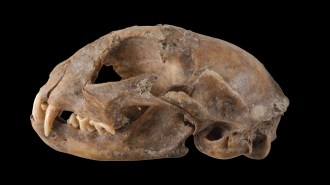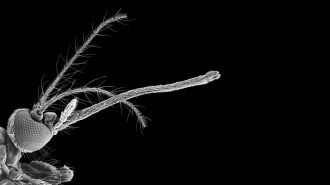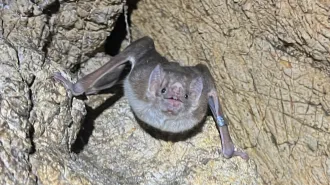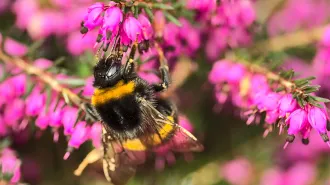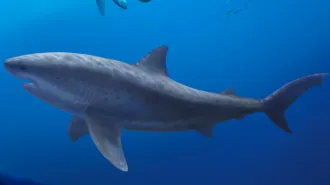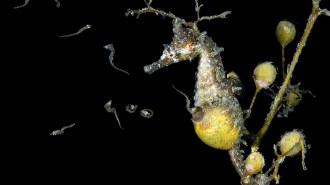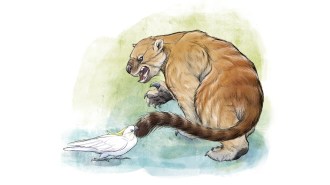Fewer scavengers could mean more zoonotic disease
Without big scavengers, smaller ones — and the diseases they spread — could proliferate
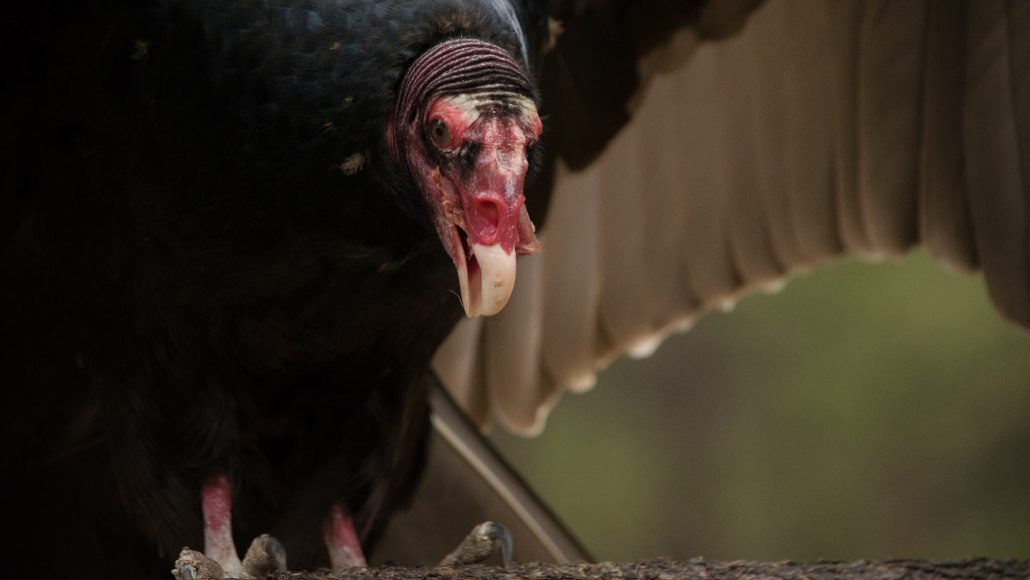
The ecosystem service that scavengers like this turkey vulture provide could help prevent the spread of disease from animals to people.
Jon Nelson/Flickr
Scavengers often get a bad rap — hyena giggles are nefarious, crows gather in “murders” and the naked necks of vultures speak for themselves. But the bodies of the dead don’t just disappear. Scavengers — especially large species — ensure our world isn’t coated in carrion.
But in a survey of nearly 1,400 vertebrate scavenging species, 36 percent are declining or threatened with extinction, researchers report June 16 in Proceedings of the National Academy of Sciences. The biggest scavengers are the most under threat, while smaller animals that scavenge on the side are thriving. Those side scavengers are more likely to spread diseases to humans. Conserving Earth’s dead-dining darlings, it turns out, might help human health as well.
Scavengers are the original sanitation workers. In the Americas and Europe, about 75 percent of all available carrion is partially or fully eaten by scavengers, with turkey vultures alone consuming 1.5 million tons of rancid meat per year. “I have personally observed a group of eight to 10 Andean condors (Vultur gryphus) removing an entire wild boar carcass in less than five hours,” says Pablo Plaza, an ornithologist and veterinarian at Universidad Nacional del Comahue in Argentina, who was not involved in the study.
The aesthetic benefits this disposal method are obvious. It could also help our health, says Chinmay Sonawane, an ecologist at Stanford University. Sonawane and his colleagues showed in 2021 that spotted hyenas (Crocuta crocuta) in Mekelle, Ethiopia took care of 200 tons of livestock waste per year, preventing an estimated five spillovers of anthrax and bovine tuberculosis to humans and 140 to their livestock.
“We were interested in trying to scale this up at a global level,” Sonawane says. He and his colleagues gathered reports of 1,376 vertebrate species known to eat carrion and examined how well the populations of different species were doing according to the International Union for Conservation of Nature (IUCN) Red List.
Some scavengers species are obvious — feral dogs, vultures or rats. But many herbivores like buffalo, parrotfish and squirrels will take a taste or two from a corpse. Few species rely solely on carrion for their food — only one percent of the species the scientists scanned were “obligate” scavengers. About 50 percent were “facultative” scavengers, who ate carrion as only one part of their diet. For the final 49 percent, the amount of carrion they ate was unknown.
Of the scavenging species, 36 percent are either already threatened and endangered, or their populations are dropping. Obligate scavengers are especially at risk — half of the 17 species are listed as “vulnerable” or “critically endangered.” Most of the risk comes from human activities such as livestock farming — where poisons targeting mammalian predators might poison scavengers by mistake — and a wildlife trade with a preference for the big and bad.
In contrast, mesoscavengers — smaller animals that eat carrion on the side — are thriving. “They’re better adapted to sticking around in human dominated habitats,” Sonawane explains, eating human food as well as carrion.
But while mesoscavengers can pick up some slack when it comes to cleaning corpses, they can’t fully make up for the absence of the largest of their kind. “As we went through the literature, it was a reoccurring pattern that mesoscavengers cannot functionally replace the carrion consumption,” Sonawane says. Many smaller scavengers rely on tracking larger ones to find the carrion in the first place. Smaller species also often need the larger animals to break into a carcass before they can access the goods.
These smaller species are more likely to spread diseases to people. Larger rat and mouse populations are associated with increases in outbreaks of leptospirosis, a waterborne bacterial disease. When vulture populations collapsed in India in the 1990s, feral dog populations soared — resulting in an estimated 39 million dog bites and 48,000 rabies deaths between 1992 and 2006.
The scavenger survey “provides an excellent illustration of how the decline of scavengers can lead to human health problems,” Plaza says, though scientists still need experimental evidence of just how big the health impact might be. He hopes that studies like this one will promote conservation of large scavengers, and help people see them with a little less disgust — and a little more gratitude.
